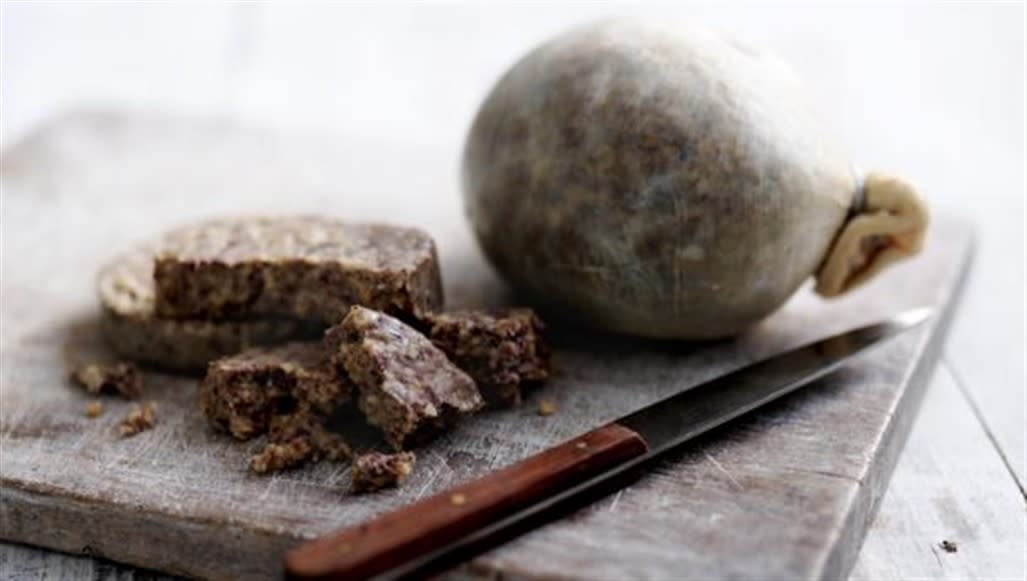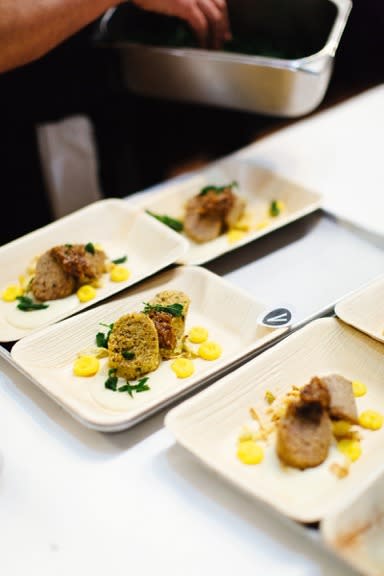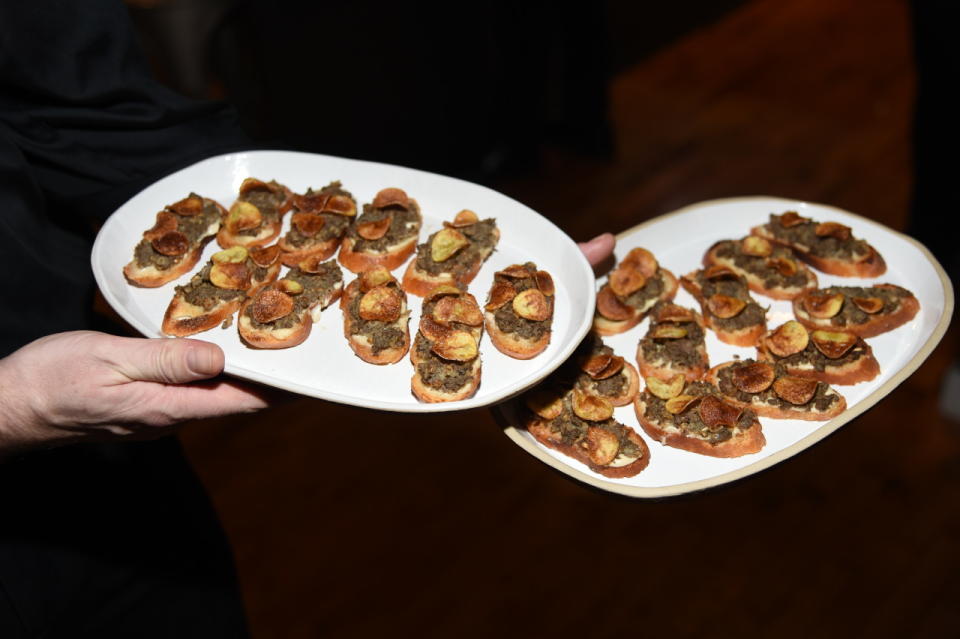What Exactly Is Haggis, and Why Is It Illegal in the U.S.?

Haggis, the centerpiece of a Burns Night dinner. (Photo: BBC America)
On or around Jan. 25 every year, poetry and whisky lovers around the world celebrate Burns Night, honoring the birthday of the writer Robert Burns. Considered the national poet of Scotland, he lived in the late 1700s and is best known for writing “Auld Lang Syne.”
The night is commemorated with Burns suppers, and a central component is haggis, a traditional pudding that, frankly, scares off many American diners.
Yahoo Food caught up with some chefs and whisky experts to find out more about the holiday — and what haggis actually is.
What’s a traditional Burns Night like?
Burns Night always centers around a supper that features a few key components.
“One of the main focuses of the evening is paying homage to Robert Burns, so poems are read and sung in unison,” says Peter Karras, Master of Scotch at Pernod Ricard. “The night is filled with Scottish tunes. Bagpipes, acoustic guitar, or fiddles are a must.”
How important is haggis to the meal?
A few courses might start the evening, such as a souplike Scotch broth, but “haggis, in some way, shape, or form is considered a critical, must-have element of any traditional Burns Night supper — some might describe it as the ‘crowning glory’ of the evening,” says Simon Brooking, the Master Ambassador for Laphroaig single-malt Scotch.
The presentation of the haggis is usually somewhat ceremonial, and includes the recitation of Burns’s poem “Address to a Haggis,” which is usually dramatically read while the haggis is cut open.

A take on haggis created by chef Patrick McCandless. (Photo: Laphroaig Scotch Whisky)
So what is haggis, and can you find it in the U.S.?
Traditional haggis is made with sheep heart, liver, and lungs that are cooked along with celery, beef fat, ground oats, and spices, and then cooked in a sheep stomach, although now an artificial casing is often used, says chef Jessica Meter, who owns the catering company Shultz & Ficher. Authentic haggis is banned in the United States, because the FDA has deemed sheep’s lungs unfit for human consumption. The other offal isn’t illegal but can be difficult to track down, Meter says.
MORE: 7 Strange Food Phobias You Might Have Without Even Knowing It

Haggis crostini made by chef Jessica Meter.
So what’s a version you can actually get Americans to eat?
Chef Patrick McCandless, who recently prepared a Burns Night supper in Brooklyn with Laphroaig and Dinner Lab, a nationwide supper club, says that “unless you are lucky enough to find some bootleg black market haggis,” any American version will be an approximation, made in different animal or synthetic casings, or even cooked sous vide style in a bag in a warm-water immersion until it has a pudding consistency. He’s even seen a vegetarian version.
For the Dinner Lab celebration, McCandless made a version with lamb meat cooked in a hog casing, using more muscles than entrails in the mix so it had more of a sausage consistency.
Meter, who has also cooked Burns Night suppers, including one recently for The Glenlivet Scotch, made a crostini version that wasn’t as intimidating as a full-fledged entrée. She used fresh goat heart, kidney, lamb liver, beef chuck, lamb shoulder, and bacon to make a spread served on toast. The dish is traditionally served with “neeps and tatties” (rutabaga and potato), and to represent them, she incorporated a rutabaga purée and fingerling potato chips as elements of the crostini dish.
MORE: 9 Hotels for True Whiskey Lovers
Is whisky integral to the meal?
In addition to giving newcomers the liquid courage to try haggis, whisky has historical roots in the dinner. Burns was a pioneer of the Scottish romantic movement, Brooking says. In his poem “The Author’s Earnest Cry and Prayer,” he railed against the effect of restrictive taxation of whisky on the common Scot. Its conclusion is, “Freedom an Whisky gang thegither!”
MORE: This Is What $25,000 Scotch Tastes Like

